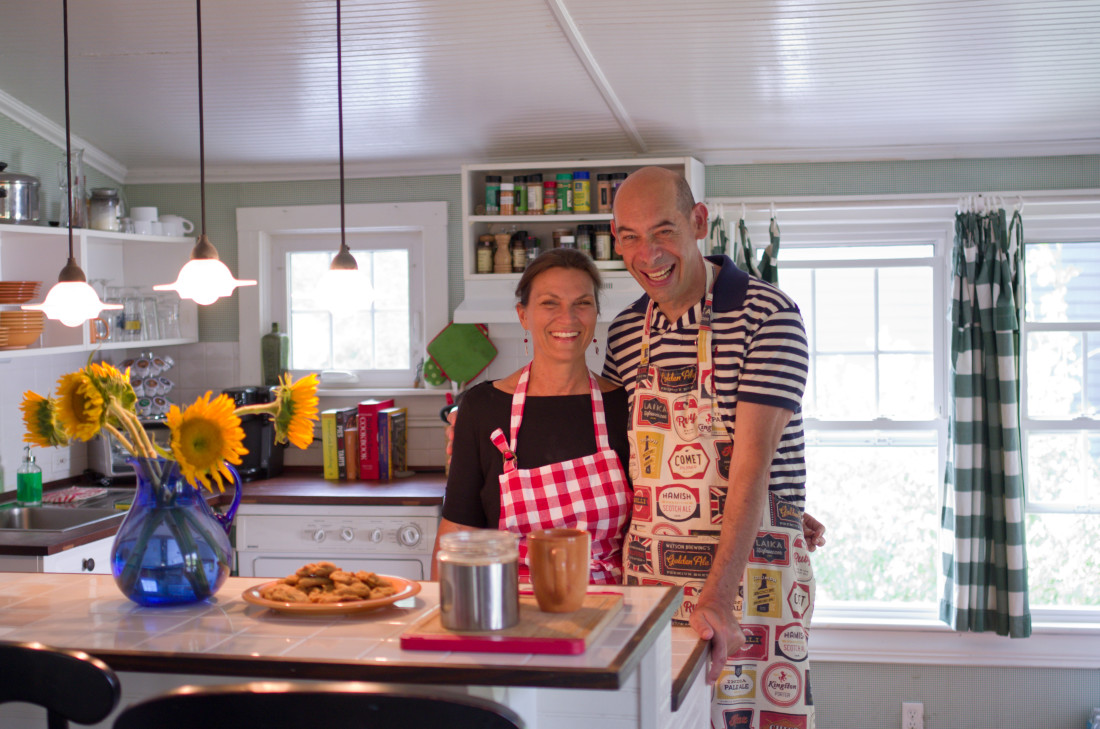Unlike formal restaurant settings, dinner theater or culinary schools, in-home cooking classes offer an intimate setting and the chance to learn and experience food in new ways. The idea isn’t new to Asheville: Barbara Swell has been offering them for more than 10 years through her business, Log Cabin Cooking. But they’re increasing in popularity, she says. “I think that tourists want a more informal experience that gives them a flavor of what the area is like,” says Swell.
“A more formal class focuses on technique, and an in-home cooking class is more about the experience,” she continues. “It’s informal, and you are invited into someone’s home, which is a special treat, an honor. In-home cooking classes are more personal with small groups.”
From strangers to friends
Those are key components to classes at Cottage Cooking as well. Responding to a friend’s request for lessons and drawing on their own experiences, Liisa Andreassen and John Godts launched their in-home lessons in March.
Andreassen previously owned a catering company in Naples, Fla. Godts, who had taken cooking classes, recalls, “We couldn’t joke around, and it was kind of boring. I like to have fun, and that is why I decided to start these classes — to see people smiling and having a good time.”
Their classes are designed to be interactive, starting with fun facts about the origin of the featured dish. The home setting makes people feel comfortable too, and classes are small — typically four or fewer participants. Andreassen’s and Godts’ kitchen is adorned with sage green-checked wallpaper, wooden countertops and white beadboarding. “People like the intimate atmosphere,” says Andreassen. “It’s like going to a friend’s house for dinner but getting to learn something new. Guests come in strangers, but then leave as friends.”
The pair also hosts classes in other locations. “We bring everything with us,” Godts says. “And then we clean everything before we leave.”
Classes are geared toward the beginner to intermediate, from those who know very little about cooking to experienced home cooks who want to take their cuisine to the next level, they explain. What guests can expect to learn varies by the type of class they take, Andreassen says. For example, during a sushi class, guests learn how to make fancy vegetable garnishes, prepare sushi from the rice to the roll and make a peanut-ginger salad — complete with a lesson on kale massaging.
All their students go with home with full bellies, new recipes and the knowledge of having made something good.
Andreasson points out that guests can request a certain theme or food when booking a class. “We also encourage people when they call to think about any dishes they would like to learn about from their own backgrounds,” she says.
“We specialize in generality,” says Godts. “Whatever people like to cook, to learn, we can teach.” Godts, who is from Belgium, offers classes on some of his native dishes too.
Recent attendees Yvonne Haarsma and Elliott Berv say that they really liked the hands-on approach. “You really get your hands into [the experience],” says Berv, who took a sushi class.
Fearless food
For the last two years, local food coach Janelle Lucido-Conate, has offered fermenting classes in her home. Recently, she added classes based on her new cookbook, Food Without Fear.
“Folks really want to feel more freedom and joy in their kitchens,” she says. “They want to be able to create food with ease that they enjoy and isn’t a chore.” So Lucido-Conate focuses on home cooking.
“Ordinarily, when you go into a commercial kitchen, there is commercial equipment — not just the commercial stove and refrigerator, but also commercial pans and cookware,” she says.
The experience may be hard for people to translate once they get home and have to create food they like with everyday, inexpensive pots, pans, knives and such, Lucido-Conate says.
She also helps people balance the need for food to both taste good and nourish. “I support people on the emotional aspect equally to the skills and recipes,” she says. Classes are geared toward whole foods such as broths, legumes and vegetables.
“In a commercial cooking class, you might just go and learn skills and recipes in a group, but for me, it comes with a whole level of support.”




Looks like great fun!